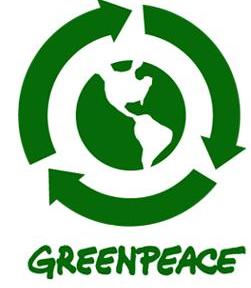Advice given by consultancy firm McKinsey and Co to rainforest countries like Guyana is “fundamentally flawed” and helps to safeguard their logging industry while gaining access to millions of dollars in funds intended to protect trees, says a report by Greenpeace, which has been rejected by the government here.
The report ‘Bad Influence – How McKinsey inspired plans lead to rainforest destruction’ says that advice given by McKinsey to national governments could lead to an increase in the destructive logging which it is intended to prevent. The report by the international environmental advocacy group examined McKinsey’s work in Guyana, Indonesia, the Democratic Republic of Congo and Papua New Guinea.
 Preventing deforestation is one of the key planks of a UN programme to combat global warming, since clearing trees that absorb greenhouse gases increases the concentration of heat- trapping substances in the atmosphere by about 17 percent.
Preventing deforestation is one of the key planks of a UN programme to combat global warming, since clearing trees that absorb greenhouse gases increases the concentration of heat- trapping substances in the atmosphere by about 17 percent.
In a press release, Greenpeace said that there are basic errors in McKinsey-influenced national plans. “McKinsey is the market leader in advising national governments on Reducing Emissions from Deforestation and Degradation (REDD+) programmes, yet its advice has played a key role in distorting this process to a point where donor money could be used to subsidise the expansion of the logging industry”, Greenpeace said. According to media reports, McKinsey says that Greenpeace has misrepresented its work.
“Greenpeace’s report shows the destructive and perverse effects that the McKinsey approach will have when applied to REDD+. Key problems with McKinsey’s REDD + work included that it does not lead to a reduction of deforestation, provides an incentive for rainforest governments to over estimate future levels of deforestation, omits important costs and barely acknowledges governance issues in rainforest countries”, said Sarah Shoraka, Greenpeace Forest Campaigner. The release said that the report raises further questions about the consultancy giant, examining the “damaging influence” of McKinsey’s advice on rainforest nations’ forest protection plans.

It noted that as an example Guyana’s plan, written with input from McKinsey, allows logging to increase to 20 times its current rate and the Democratic Republic of Congo (DRC) plan proposes at least an additional 10 million hectares given as logging concessions.
Estimate
However, Agriculture Minister Robert Persaud, who also has responsibility for forestry says that virtually none of the statements in the report regarding Guyana are true. In relation to the statement that Guyana’s maximum allowable annual deforestation rate is 4.3%, he said that the point is being missed as the McKinsey Study does not seek to propose a projected rate of deforestation for Guyana, but to provide an estimate of economic value to the nation and to the world of Guyana’s forest.
In a letter to Greenpeace Director, John Sauven, the Minister said that this is completely different from historic and current rates of deforestation, and reference level setting.
The basis for Greenpeace’s report comes from a new study done by University College London’s Energy Institute. “The study shows the inherent flaws of the Marginal carbon Abatement Cost (MAC) curve, used across the world to rank the cost effectiveness of carbon abatement measures including measures to reduce emissions from deforestation and forest degradation (REDD+)”, Greenpeace said.
“McKinsey’s cost curve overestimates the benefits of the logging industry and underplays or entirely ignores the costs of biodiversity loss and social upheaval. In some cases reports on which McKinsey advised make recommendations based on wholly inadequate data”, Greenpeace said. It said that McKinsey’s approach offers an incentive to governments to artificially increase predicted deforestation rates so that later ‘reductions’ can secure more compensation. Such inflated projections will ultimately come at the expense of taxpayers from donor countries and the environment, Greenpeace added.
It noted that rainforest nations are currently working to develop proposals for REDD schemes with $3.5 billion of funding agreed at Copenhagen. If properly administered, the fund should radically reduce emissions from deforestation, which currently account for up to a fifth of global greenhouse gas emissions, Greenpeace said.
The report noted that Guyana’s forest-protection plan involves the country being paid to retain forests on the basis of their economic value if they were cleared at a rate of 4.3 percent a year, about 20 times current levels. Greenpeace said that the measures in Guyana’s plan include almost no measures to address the existing drivers of deforestation in Guyana and use of REDD+ funding to facilitate ‘higher value agricultural development’, including biofuel production in ‘unique and fragile’ Savannah ecosystems and wildlife rich wetlands. It also cited the Amaila Falls project.
But Persaud said that Guyana has clearly stated its target as maintaining 99.5% of forest cover. “This target is one of the highest (if not the highest) in the world, and is embedded in Guyana’s bilateral agreement with Norway”, he noted.
As to the statement about there being no measures in Guyana’s REDD+ strategy to address the drivers of deforestation, Persaud denied this, saying that “there is a comprehensive body of work setting out what Guyana is doing to maintain its high forest cover, based on scientific data produced by Poyry and independently verified by Det Norske Veritas”.
Amaila
Regarding Amaila, he said that while Guyana intends to use REDD+ money to build the Amaila Falls hydro plant, none of the supporting materials used by Greenpeace to explain its justification refers to the actual project being planned. Contrary to what is stated by Greenpeace, in total, this will involve the use of about 48 square km of rainforest, out of 180,000 square km. After emissions associated with its construction are accounted for, it will remove 92% of the entire country’s energy-related emissions, he noted adding that the construction will be done in accordance with IDB, IFC and World Commission on Dams guidelines and safeguards.
Persaud also accused Greenpeace of using “hearsay to justify false positions” and said that this is irresponsible. He said that Greenpeace has arrived at unsubstantiated positions without any responsible investigations being conducted and pointed the organisation to reports under the Guyana-Norway Agreement. He also said that the organisation misses the meaning of the concept of REDD+ noting that the Guyana model as laid out in the Low Carbon Development Strategy is built on the foundation of sustainable management of resources and protection of the livelihoods of people. All of the information is available publicly, Persaud noted.
“As well as the almost total lack of factual accuracy, Greenpeace’s suggestion that developing countries are unable to handle consultants’ advice is absurd and offensive. In REDD+, as in other matters, we believe in encouraging a plurality of viewpoints. Having benefited from all those viewpoints, we are perfectly capable of making our own sovereign decisions, in consultation with our own people. We expected better from Greenpeace”, Persaud.
Greenpeace has called on McKinsey to immediately publish all the data, assumptions and analysis underlying the international and national versions of its cost curve and include such disclosures in all future publications. It also said that the consultancy firm must revise methodologies to reflect international norms in biological carbon accounting, and apply a consistent and transparent approach.
The organisation also called on rainforest nations and donor countries not to commission or fund any further work from McKinsey until the company’s advice prioritises ending deforestation and preventing forest destruction in areas at risk.




